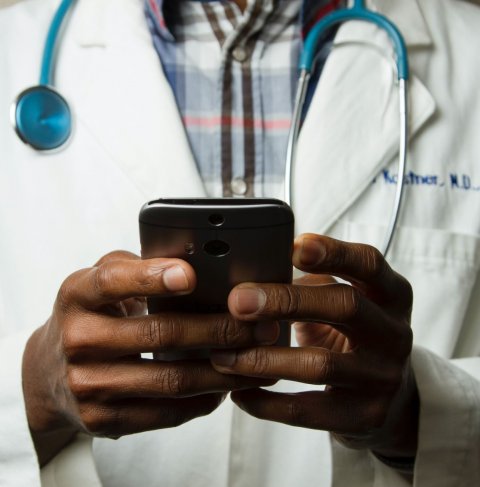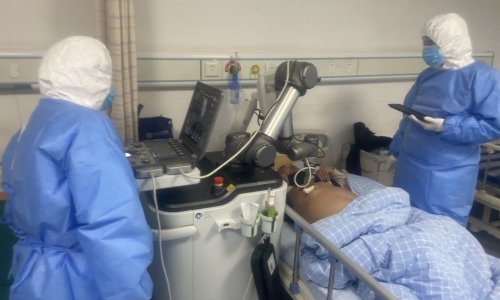News • Demographic disconnect
Covid-19 drives telehealth (but older people might get left behind)
The Covid-19 pandemic has led to a significant increase in video visits between patients and their doctors, but for many older adults, the shift has cut them off from care, rather than connecting them.
A study by researchers at the University of California San Francisco has found that more than a third of adults over age 65 face potential difficulties seeing their doctor via telemedicine, with the greatest challenges experienced by older, low-income men in remote or rural areas, especially those with disabilities or poor health. The findings appear online in JAMA Internal Medicine.

Image source: Unsplash/National Cancer Institute
“Telemedicine is not inherently accessible, and mandating its use leaves many older adults without access to their medical care,” said lead author Kenneth Lam, MD, a clinical fellow in geriatrics at UCSF. “We need further innovation in devices, services and policy to make sure older adults are not left behind during this migration.”
Older adults account for a quarter of U.S. medical office visits and often suffer from multiple morbidities and disabilities. The U.S. Department of Health and Human Services and other organizations have promoted video visits to reach patients at home, but these visits require patients to have the knowledge and capacity to get online, operate and troubleshoot audiovisual equipment, and communicate without the cues available during a personal visit.
In the JAMA Internal Medicine study, Lam and his colleagues analyzed 2018 data on 4,525 patients from the National Health and Aging Trends Study of Medicare beneficiaries age 65 or older. They examined various scenarios that would pose difficulties with a video visit, including poor hearing or eyesight; problems speaking or making oneself understood; possible or probable dementia; owning no Internet-enabled devices or lack of awareness in how to use them; and no use of email, texting or Internet in the past month. The average patient was 79.6 years old, and 69 percent were white, 21 percent Black and 6 percent Hispanic.
To build an accessible telemedicine system, we need actionable plans and contingencies to overcome the high prevalence of inexperience with technology and disability in the older population
Kenneth Lam
Overall, for 2018, the researchers estimated that 38 percent of all older Americans – 13 million total – were not ready for video visits, and 72 percent of those 85 or older were not, primarily due to inexperience with technology, followed by physical disability. Even with third-party support, 32 percent (10.8 million) of older adults still were unready, and 20 percent (6.7 million) could not even handle a telephone visit due to dementia or difficulty hearing or communicating.
A lack of readiness was more prevalent in patients who were older, male, unmarried, Black or Hispanic, lived rurally, and had less education, lower income and poorer self-reported health, the researchers said. “To build an accessible telemedicine system, we need actionable plans and contingencies to overcome the high prevalence of inexperience with technology and disability in the older population,” Lam said. “This includes devices with better designed user interfaces to get connected, digital accommodations for hearing and visual impairments, services to train older adults in the use of devices and, for some clinicians, keeping their offices open during the pandemic.”
Source: University of California, San Francisco (UCSF)
04.08.2020











